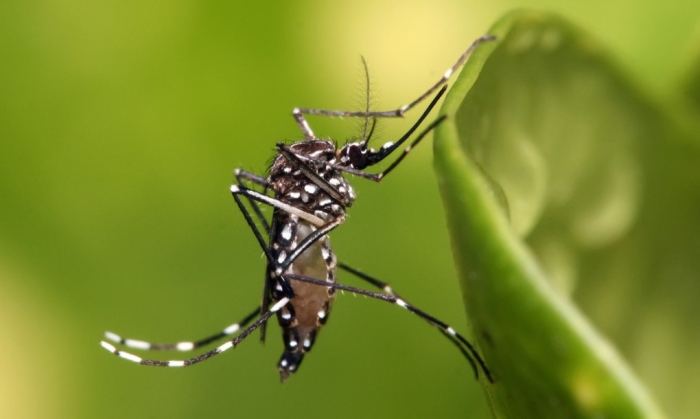‘Mosquito is a daytime feeder’
Submitted by jcht2010 on

By Jessica Coleman
Staff Writer
In recent weeks, mass media has been abuzz with talk of Zika, a mosquito-borne virus that causes rash, fever, and joint pain.
Zika is spread primarily by mosquitoes, but can also be sexually transmitted. While its symptoms in most people are mild, it can be transmitted from pregnant mother to fetus, and is thought to cause severe birth defects, and can be dangerous for the elderly or those with weaker immune systems.
The most well-known fetal defect associated with Zika is microcephaly, a condition in which a baby has an abnormally small head, usually accompanied by brain abnormalities. Research to positively determine whether Zika causes microcephaly is ongoing, according to the Center for Disease Control. New research released on March 4 comes closer to a positive conclusion, suggesting that Zika damages cells that would form parts of the brain in fetuses.
Steve Sample, street supervisor for the City of Edna, attended a class on Zika, which helped to separate facts from fear. He said that while there have been a few cases near Houston, most of them have not been spread within the continental U.S.
“We really don’t want people to panic right now,” he said, “most of the cases have come from people who travelled to South America and have come back with it.”
The virus is known to be spread by the Aedus Mosquito, that unlike mosquitoes that are the bane of summer nights, is active only during the daytime, causing some challenges for the city.
“I can’t spray during the day, because of the fact that you’ve got people out in the public,” Sample said. “They’re outside. There are people at schools. That’s why we spray at night. This mosquito is a daytime feeder. At night they like inside, or under your car, or in the bushes. They’re really going to be hard to control with spray.”
Sample said that spraying during the day could also negatively impact bee populations, because the spray is toxic to bees. Declining bee population has been a hot-button issue in recent years, as bee populations have a global domino effect on agriculture. Spraying at night has, in the past,
The alternative, he said, is larvicides. The city will place larvicide tablets in standing water to kill larvae, in addition to spraying at night for the nighttime mosquitoes.
“The product we use is a larvicide that has a 30-day period during which they are good. It’s just a little tablet and you throw them every 100 feet or so. If you throw them in a ditch with standing water and the ditch dries up, they're still good for 30 days.”
A large part of the answer to Zika prevention is citizen cooperation, he said.
“It is going to take some cooperation from homeowners,” he said. “Because of the fact that they like to be underneath things and indoors, it’s going to be hard for us to control with what we have. Homeowners really need to dump out any standing water and if they can’t dump it out, use mineral oil. Just a drop or two of mineral oil in whatever standing water they have that they can’t dump out.”
Mineral oil creates a film over the water, which can smother mosquito larvae in standing water after rains, and can be used in puddles and rain buckets – anywhere that fish and wildlife don’t live in the water.
Sample said the most important thing is to not panic, and to remember that Zika’s symptoms are often so mild that those affected think they have a cold or the flu.
“It really depends on your immune system,” he said, “but most people who get it won’t even know they have it.”
Rate this article:
- Log in to post comments


